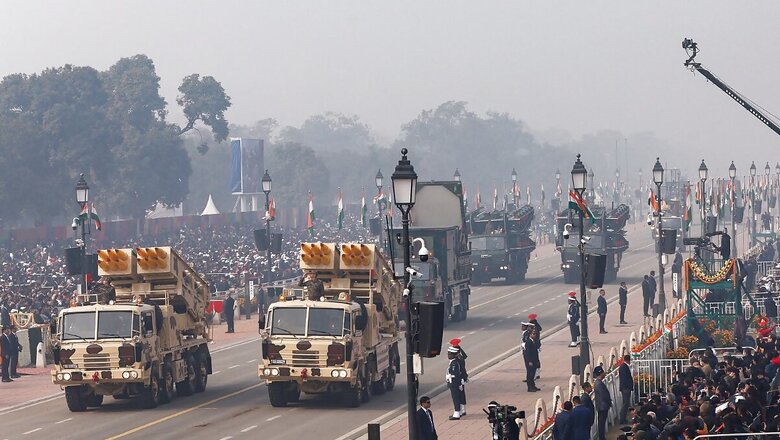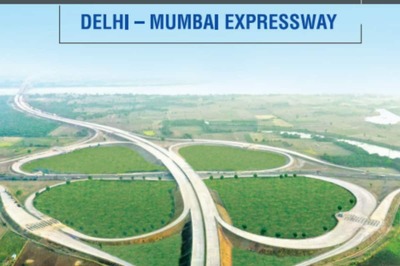
views
The Bharatiya Janata Party (BJP) has been extremely efficient in producing headline-catching election manifestoes in 2014 and 2019 and especially again last month for the 2024 elections. Last year, after completing nine years of rule, the party issued a booklet listing its achievements. The defence and national security sections were elaborately covered. This year, the BJP launched a massive 15-day campaign to invite suggestions through face-to-face meetings and the NaMo app from around 10 million supporters to include in the election manifesto. The final product was an attractive pamphlet immersed in Modi’s pictures and a surfeit of Modi ki guarantees. It was a Modi manifesto.
This time, defence and national security have been covered under Modi ki guarantee for surakshit Bharat. There is plenty the BJP can take credit for, such as eliminating terrorism ……nearly; following the attack on Parliament in December 2001 (under BJP rule) and the Mumbai 2008 attacks under the United Progressive Alliance (UPA) dispensation. In 2001, the BJP practiced coercive diplomacy which was partially successful. In 2008, the UPA exercised strategic restraint — doing nothing — which the Modi sarkar has roundly condemned. Its strong advocacy of zero tolerance for terrorism was demonstrated by the Uri and Myanmar surgical strikes (surgical a misnomer, actually cross-border strikes in 2016) and the Balakot surgical strike in 2019. These created a deterrence vis-a-vis Pakistan, which holds.
The BJP’s claim of eliminating terrorism and preventing major attacks in the last decade is factually incorrect as terrorists struck at Pathankot, Pulwama and Uri Brigade Headquarters and 2950 civilians and security forces were killed in terrorist-related incidents between 2014 and 2023. Still, the BJP’s inventory of achievements is impressive: revocation of Article 370, 52 per cent reduction in Left Wing Extremism (LWE) related violence, with Home Minister Amit Shah’s claim that it will be crushed within three years. This feat should be achieved through talks with Maoists. There is an overall decline of 73 per cent in the insurgency in the Northeast (but there is no mention of Manipur where violence has continued for one year and repolling ordered twice). Combined with the delicate situation on the India-Myanmar border, with Junta forces fighting with their back to the wall, Myanmar will present a major threat to the Northeast.
While claiming credit for appointing the Chief of Defence Staff (CDS), the BJP has emphasised its intent to complete theaterisation soon. The push for infrastructure development in the northern borders is matched by an equal thrust towards the security of the Indian Ocean Region. Defence manufacturing and Atmanirbharta figure prominently in making India a global manufacturing hub. There is no mention of China or Pakistan and how to deal with them even as the Opposition has been attacking the government for loss of territory in east Ladakh which the government is in emphatic denial. This clean chit to China will make the resolution of the border dispute on India’s terms and deescalating the ongoing confrontation along LAC difficult, if not impossible. Restoration of status quo ante (April 20, 2020) that has been demanded by successive Army chiefs, is just not realisable.
On theaterisation, the absence of political guidance is a major deficiency. Leaving it to the CDS to obtain consensus on critical aspects such as resource allocation, the redefined roles of Service Chiefs under Theatre Commanders, and most crucially, the operational command and control of theatres, necessitates input from the Raksha Mantri (RM) and NSA. Equally, NSA Ajit Doval and National Security Council Secretariate Military Wing need to update the national security strategy submitted by the Integrated Defence Staff in 2021. It is surprising that the government has not taken these two issues, theaterisation and NSS, seriously enough.
The issue most befuddling is the statistic of defence spending, on which the 2024 BJP manifesto is silent. The Congress on the other hand has stated in its current manifesto that it will arrest the decline in defence spending and allocate sufficient funds. The sufficiency of funds is a matter no government has addressed. Defence allocation has plummeted from a high of 3.5 per cent in the Congress rule in the late 1980s (when I was a member of the Defence Planning Staff) to less than 2 per cent today, even when the GDP has risen exponentially. The latest SIPRI report shows India’s defence budget is $84 billion compared to China’s $296 billion.
Military procurement for India accounted for 22 per cent of the budget in 2023 of which 75 per cent went towards domestic equipment products made in India. This choice places greater reliance on indigenous production, like Tejas aircraft for the Indian Air Force (IAF), rather than on quality and state-of-the-art equipment. Emphasis is necessarily on Atmanirbharta.
In defence allocation, for 2024-25, defence outlay was increased by 4.7 per cent which is the lowest in ten years (except in 2020-21) when it was 1.45 per cent of the GDP. As a percentage of GDP, defence spending has not reached 2 per cent at a time when two full-fledged wars are being fought along with several skirmishes. The capital budget for modernisation best illustrates the parsimony: the gap between the amount demanded and the amount allocated in 2015-16 was Rs 16,646 crore while in 2022-23, it rose to Rs 63,328 crore.
Government officials offer the perennial excuse that defence forces cannot spend the money. Amit Cowshish, who was a financial advisor (acquisition) a decade ago, says 1.9 per cent of GDP in the current fiscal is 13 per cent of government expenditure. A defence spending budget which is 3 per cent of the GDP can begin to catch up with China in military capability. The rest of the world is investing a lot more in defence with 31 North Atlantic Treaty Organisation (NATO) nations committed to reaching 2 per cent of GDP and the UK pledging to reach 2.5 per cent of GDP by 2027. Even pacifist Japan has decided to put aside the 1 per cent spending on defence as a constitutional limitation and will spend 2.5 per cent of GDP by 2027 and invest in a meteoric jump of $315 billion to augment capabilities and deterrence.
The government is trying to fix the capability gap through the Agniveer scheme which will reduce the revenue bill in about 20 years from now, but will equally undermine contemporary combat capability as manpower shortfall has already reached 200,000 personnel. There is no mention of the two-front war challenge in the BJP or Congress manifestoes which will involve simultaneously holding Pakistan and deterring China as they fight in collusion, handling insurgency and terrorism challenges in Northeast and J&K while also ensuring domination in the Indian Ocean Region. Fighting on two fronts against two countries represents a clear failure of diplomacy. But the government is gung ho as it believes there will be no war.
In the 2014 and 2019 election manifestoes, the government had criticised UPA for its gross neglect of defence and national security, accusing it of allowing Chinese incursions in Ladakh. The Congress has reciprocated the charge, citing in the 2024 manifesto the 2000 sq km loss in east Ladakh in 2020. The issue on which complete silence prevails in both BJP and Congress manifestoes is the nuclear doctrine and promised review of No First Use (NFU) by the BJP. It was expected that in view of Pakistan’s tactical nuclear weapons, NFU might be dropped. While this issue is dormant, modernisation of the nuclear arsenal is continuing of India’s TRIAD: land, air and sea-based nuclear deterrent.
Election manifestoes are a series of commitments and pledges. The security threats and challenges India faces today are extreme and require additional political attention and defence funding if the nation is to achieve the 2047 mission of Viksit Bharat.
Ashok K Mehta is a retired Lt General of the Gorkha Regiment, Indian Army & Columnist. He writes and speaks extensively on defence and strategic affairs. Views expressed in the above piece are personal and solely that of the author. They do not necessarily reflect News18’s views.

















Comments
0 comment